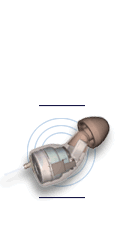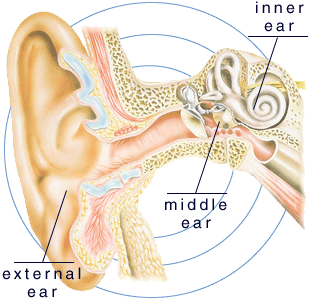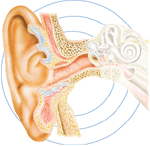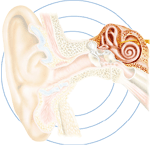
|

|
Ears,
the body's most sensitive organ, have three main sections
— the external ear, middle ear and inner ear. These
parts work together to conduct outside sounds to the
hearing processing center in the brain.
|
| |
|
 
Ears
are amazing. Here's how they work:
|
|
 |
THE
EXTERNAL EAR
has two parts. The outside portion is called the PINNA.
Its job is to capture sounds. These sounds travel through
the AUDITORY or EAR CANAL, a small, twisting tube about
1" long with the diameter of a plastic straw. It connects
to the TYMPANIC MEMBRANE or EAR DRUM, which amplifies
the sounds.
|
|
|
| THE
MIDDLE EAR
is an air-filled space that connects the outer ear canal
to the inner ear. Your EUSTACHIAN TUBE opens and closes
to compensate for changes in air pressure (flying, diving,
etc.) that affect the EAR DRUM. OSSICLES — the Malleus
(hammer), Incus (anvil) and Stapes (stirrup) – are
a very delicate set of bones (the smallest in the body).
These transmit and amplify eardrum vibrations caused by
sounds. |

|
|
|
 |
THE
INNER EAR receives these vibrations and transforms
them into impulses. Hair cells (CILIA) that sense sound
and organs for balance are located in the fluid-filled,
spiral COCHLEA or "hearing" part of the inner ear. The
OTIC NERVE carries information to the cerebral cortex
of the brain, where it's instantly interpreted.
|
Because
the mechanism in the inner ear is extremely delicate, damage
that occurs can manifest itself as hearing loss.
|


|

